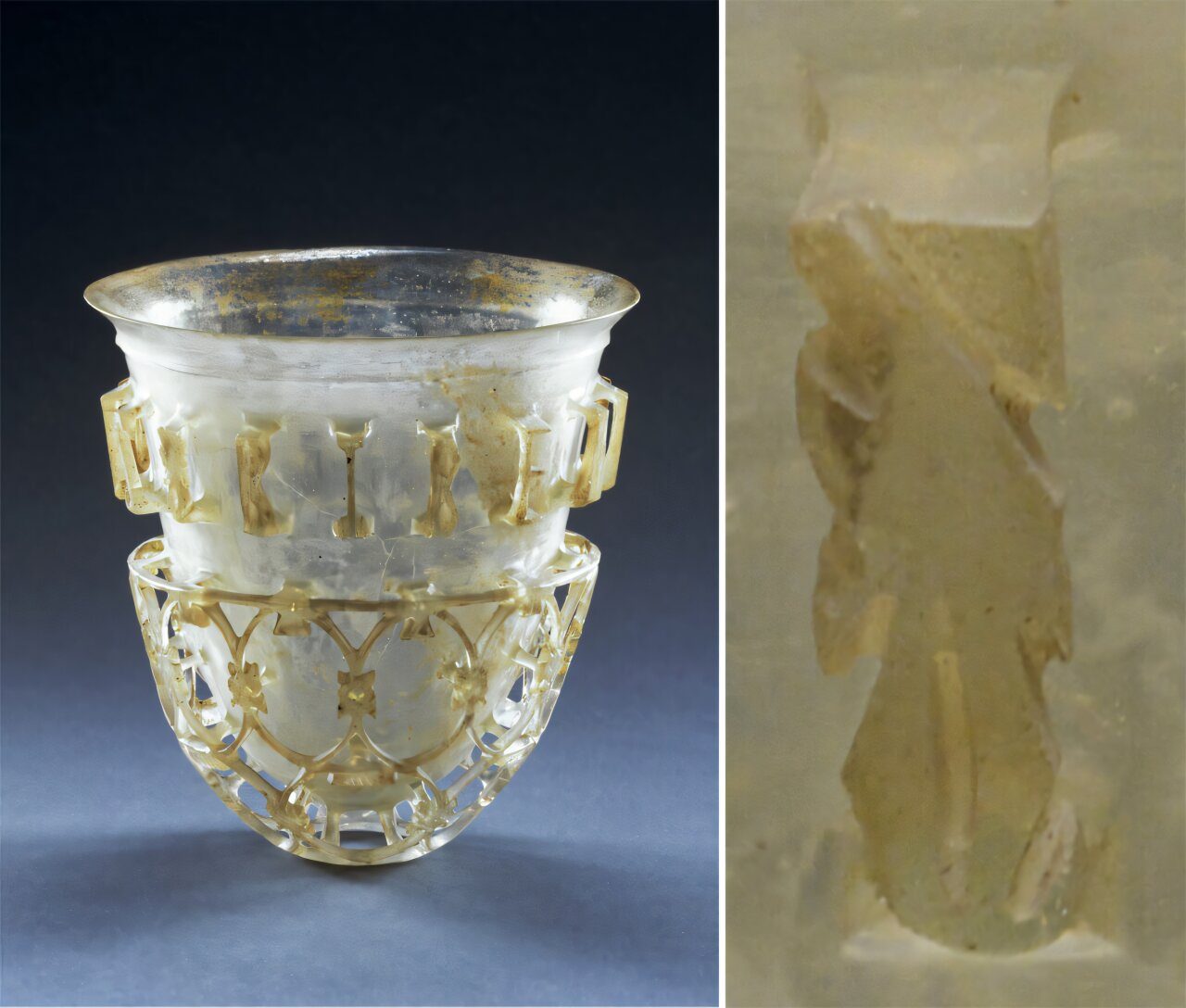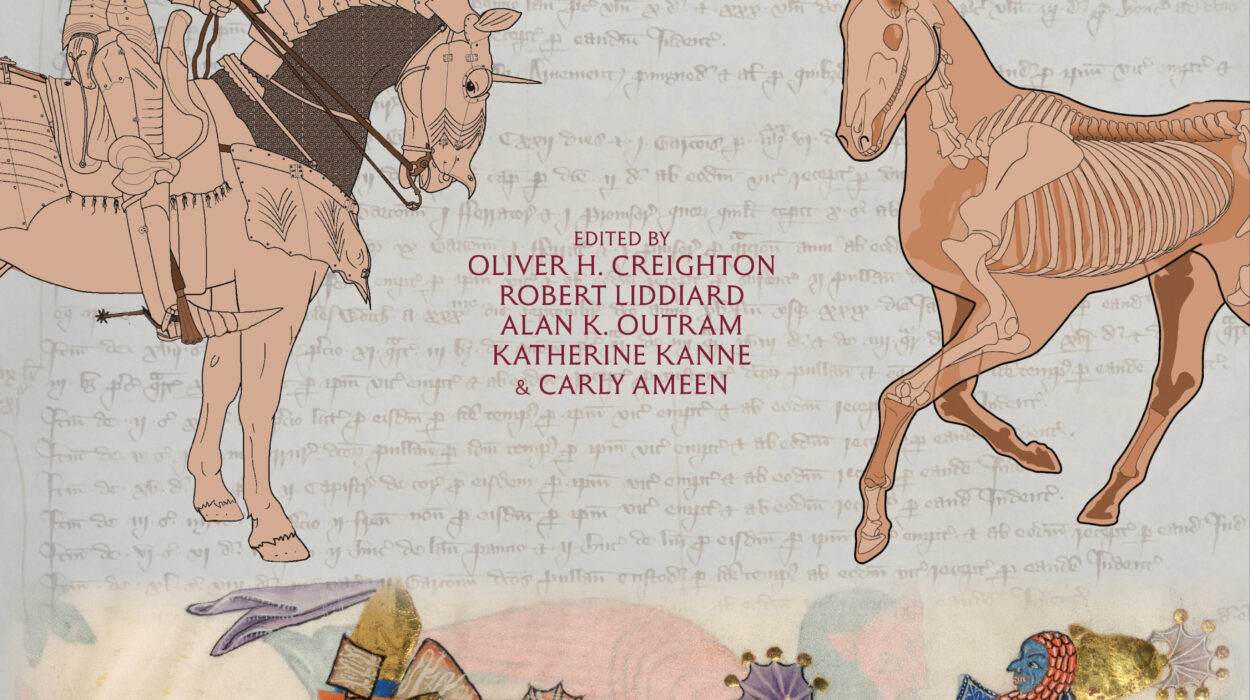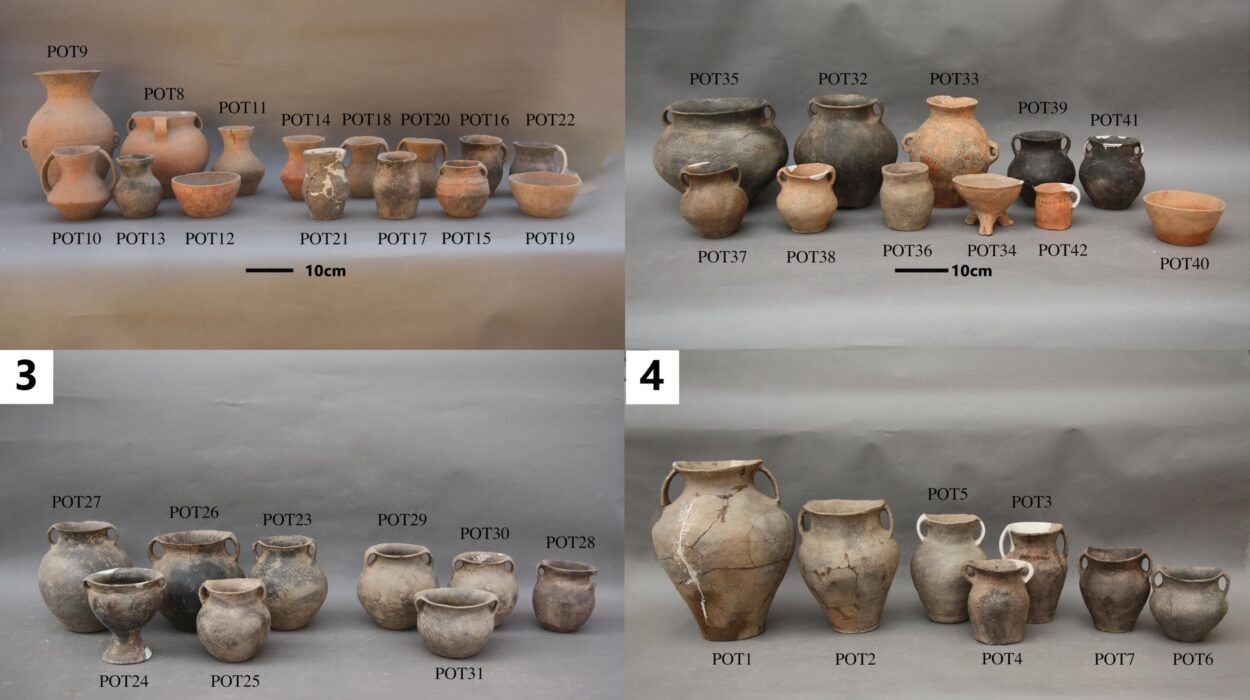In the soft, museum-lit quiet of a New York gallery, where ancient artifacts sit like frozen whispers from another age, Washington State University professor Hallie Meredith made a discovery no one expected. She was standing before a set of Roman glass cage cups—delicate, complex vessels carved between 300 and 500 CE—objects scholars had admired for centuries. Their beauty was undeniable. Their mystery, however, ran much deeper.
Meredith, an art historian and practicing glassblower, did something almost childlike in its simplicity: she turned one of the cups around. On the reverse side of the shimmering vessel, hidden from casual view, she saw symbols—diamonds, leaves, crosses—patterns dismissed for generations as mere decoration. But Meredith sensed something more.
These weren’t ornaments. They were signatures. Not of kings or wealthy patrons, but of the artisans who had crafted some of the most intricate glass the Roman world had ever produced.
That simple rotation of a glass cup opened a window into a world lost to time, uncovering a network of makers whose hands shaped antiquity but whose names had vanished.
The Mystery of the Cage Cup
Cage cups—known in Latin as diatreta—are among the most technically astonishing objects created in the ancient world. Each one began as a thick block of glass, painstakingly carved until two layers emerged: an inner cup and an outer lattice connected by slender glass bridges. The result felt impossibly light, as though the vessel were woven from air.
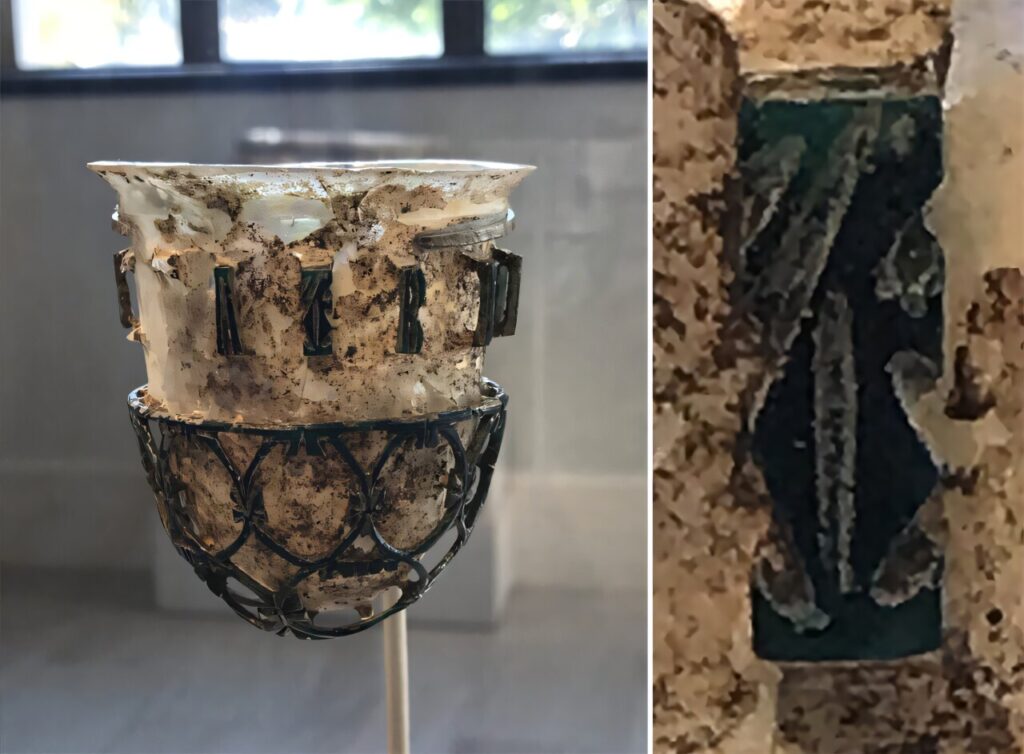
For more than 250 years, scholars debated how these works were created. Were they carved entirely by hand? Cast in molds? Finished on a wheel? And who were the people who made them?
These questions persisted because researchers focused largely on inscriptions—phrases like “Drink and live well!”—and rarely studied the abstract patterns that adorned the vessels. To most, they were ornamental filler.
But Meredith’s background as a glassblower gave her a different instinct. Makers leave clues. They leave marks. And they often sign their work in places only another craftsperson would think to look.
What others saw as decoration, she saw as communication.
Rediscovering a Lost Language of Makers
Meredith’s findings, published in two recent papers in Journal of Glass Studies and World Archaeology, trace the same openwork symbols across multiple carved vessels. These repeating motifs form what she describes as a “visual language” shared by glassworkers across centuries.
Tool marks, unfinished fragments, and carving patterns revealed something even more compelling: cage cups were not the creations of solitary geniuses. They were collaborative achievements. Engravers shaped the lattice. Apprentices roughed out designs. Polishers smoothed its surface to translucency. Workshops functioned as coordinated teams, with each member contributing to the final piece.
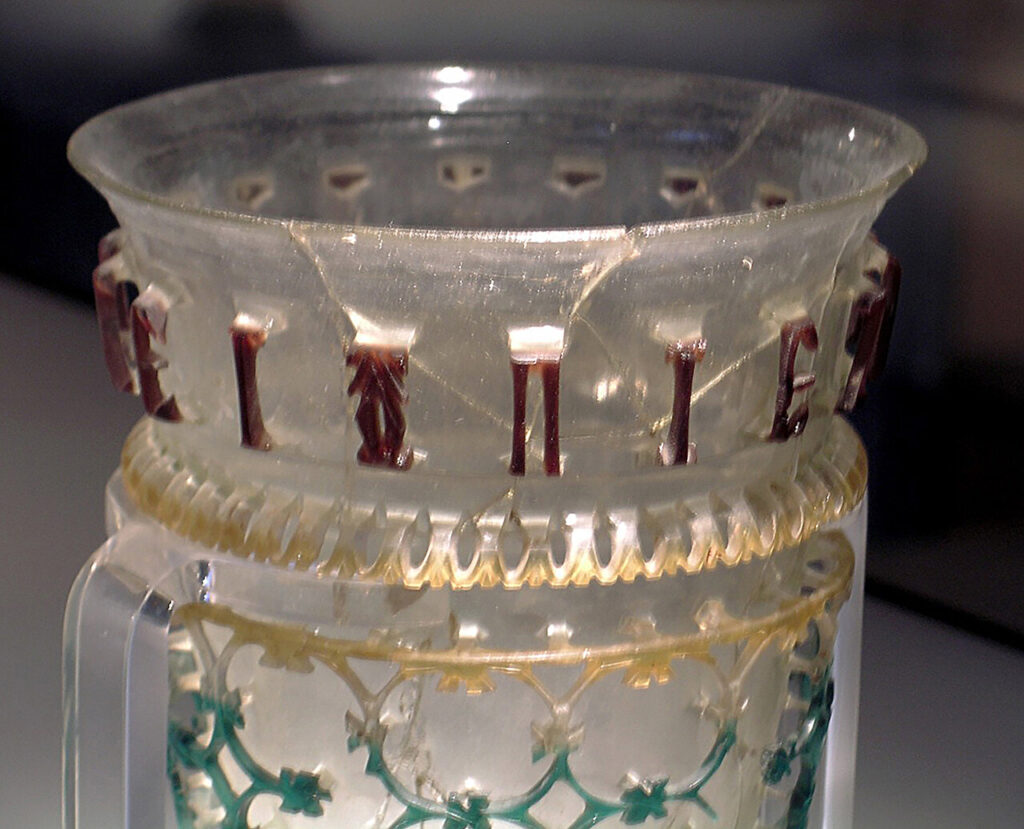
The symbols Meredith identified were not personal signatures. They were workshop marks—ancient branding, signaling the identity of the collective rather than the individual.
They hinted at bustling studios where knowledge passed from master to apprentice, and where skill was shared, not hoarded.
Seeing Through the Eyes of a Maker
Meredith’s dual identity—scholar and glassblower—gave her research an unusual sensitivity to the experience of ancient craftworkers. She understands the weight of molten glass on a rod, the pressure of a carving tool against a fragile surface, and the trust artisans must place in one another when working on an object that could shatter with the slightest misstep.
At Washington State University, she teaches a course called Experiencing Ancient Making, inviting students to enter this world through hands-on creativity. They 3D print artifacts, dissect ancient works in augmented reality, and try their hands at making rather than merely observing.
For Meredith, these activities build something more valuable than replicas—they build empathy. Understanding an ancient maker, she says, requires feeling their challenges, their limitations, and their ingenuity.
Restoring the Invisible Workforce of Antiquity
For centuries, the history of the ancient world has been told through emperors, generals, and elites. Yet most of the objects that fill museums—the tools, jewelry, vessels, and household goods—were crafted by anonymous hands.
Meredith’s work challenges this imbalance. Her research suggests that far more evidence exists about ancient craftworkers than previously acknowledged. The problem is not the absence of data—it’s the lack of attention to the subtle marks, mixed alphabets, and “imperfect” inscriptions they left behind.
Her next project bridges art history and computer science. Working with WSU students, she is building a searchable digital database that catalogs non-standard writing across thousands of ancient objects. Misspellings, hybrid scripts, and coded markings—long dismissed as errors—may instead represent the multilingual realities of artisans working across diverse markets and audiences.
These seemingly small clues could reveal major insights into identity, training, and cultural exchange among ancient workers.
A New View of Ancient Glass
Meredith’s research urges scholars—and museum visitors—to look again at ancient artifacts, to turn them over in the light, to consider not just the objects themselves but the lives behind them.
When sunlight glances off the lattice of a Roman cage cup, it reflects more than technical brilliance. It reveals the rhythms of ancient workshops, the hum of collaboration, and the quiet pride of artisans who signed their creations in symbols rather than names.
What began with a simple turn of a vessel has become a shift in understanding—a reminder that the ancient world was built not only by emperors, but by makers whose hands, though forgotten, still speak through the delicate geometry of glass.
More information: Hallie G. Meredith, An approach to craft and craftworkers in process: re-examining late 3rd-6th century CE Roman carvings, inscriptions, and engraved symbols, World Archaeology (2025). DOI: 10.1080/00438243.2025.2570270
Hallie G. Meredith, Looking for—and Finding?—Workshop Makers’ Marks on Late Roman Diatreta, Journal of Glass Studies (2025). DOI: 10.3998/jgs.6943
